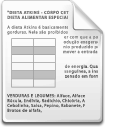Measuring progress towards rewilding
Torres, A., Fernández, N., Perino, A., Helmer, W., Saavedra, D., Revilla, E., Selva, N., Svenning, J. C. and Pereira, H. M. (2018). Measuring progress towards rewilding. 5th European Congress of Conservation Biology. doi: 10.17011/conference/eccb2018/107463
Tekijät
Päivämäärä
2018Tekijänoikeudet
© the Authors, 2018
Human domination of land has transformed ecosystems, modified ecological processes and influenced biodiversity composition across most of the terrestrial biosphere. Nevertheless, this global change does not necessarily translate into a total depletion of natural values. Innovative conservation actions are emerging as a promising strategy to enhance biodiversity, ecological resilience and ecosystem service delivery, as well as to retain ecological and evolutionary potential. For instance, rewilding projects have gained increasing attention from scientists, conservationists, practitioners, decision-makers and the media. Recovering the natural dynamics of ecosystems requires increasing ecosystem complexity while decreasing human intervention, which does not prevent interactions between people and nature from occurring if these are properly integrated in these restored self-sustaining ecosystems. Despite burgeoning interest in the ideas, the practical implementation of rewilding projects remains challenging. There is a pressing need for developing specific guidelines for monitoring progress in rewilding initiatives that are informed by the best science available. In this talk, we will present a novel approach on how to measure progress towards rewilding in a given area and we will revise the evidence available for facilitating sound decision-making in order to support local rewilding and restoration projects. Drawing on evidence from ecological research, we will introduce a bi-dimensional framework that uses indicators, state variables and targets describing the humanization intensity and the natural values of a certain region to measure its position in a gradient of wilderness. Then, we will illustrate this approach with case studies, in which we draw scenarios with low human intervention and the maximum functional complexity. The approach presented here will enable the operationalization of successful rewilding initiatives. ...
...
 ...
...
Julkaisija
Open Science Centre, University of JyväskyläKonferenssi
ECCB2018: 5th European Congress of Conservation Biology. 12th - 15th of June 2018, Jyväskylä, Finland
Alkuperäislähde
https://peerageofscience.org/conference/eccb2018/107463/Metadata
Näytä kaikki kuvailutiedotKokoelmat
- ECCB 2018 [712]
Lisenssi
Samankaltainen aineisto
Näytetään aineistoja, joilla on samankaltainen nimeke tai asiasanat.
-
Combining culturomic datasets to assess the potential for digital monitoring of cross-cultural progress towards Aichi Target 1
Correia, Ricardo; Roll, Uri; Malhado, Ana; Jepson, Paul; Ladle, Richard (Open Science Centre, University of Jyväskylä, 2018)Assessing public interest in nature is one of the key areas where culturomics shows great potential to contribute towards conservation science and practice. For example, internet search volume data has been suggested as a ... -
When to rewild? Framing rewilding in the contexts of science, culture and decision making
Hall, Iain (Open Science Centre, University of Jyväskylä, 2018)Rewilding as an approach to conservation has gained considerable ground in recent years both in terms of interest and practice. However, in an ever-expanding literature it is apparent that rewilding is a polysemic concept ... -
How do rewilders define rewilding, and how do they think it should be done.
Holmes, George; Marriott, Kate (Open Science Centre, University of Jyväskylä, 2018)The emergence of rewilding as a concept and as a practical approach to conservation in recent years has been accompanied by some debate amongst self-identified rewilding advocates and practitioners. Firstly, there has been ... -
Towards a FAIR Sharing of Scientific Experiments: Improving Discoverability and Reusability of Dielectric Measurements of Biological Tissues
Karim, Rezaul; Heinrichs, Matthias; Gleim, Lars Christoph; Cochez, Michael; Porter, Emily; Gioia, Alessandra La; Salahuddin, Saqib; O'Halloran, Martin; Decker, Stefan; Beyan, Oya (RWTH Aachen University, 2018)
Ellei toisin mainittu, julkisesti saatavilla olevia JYX-metatietoja (poislukien tiivistelmät) saa vapaasti uudelleenkäyttää CC0-lisenssillä.

